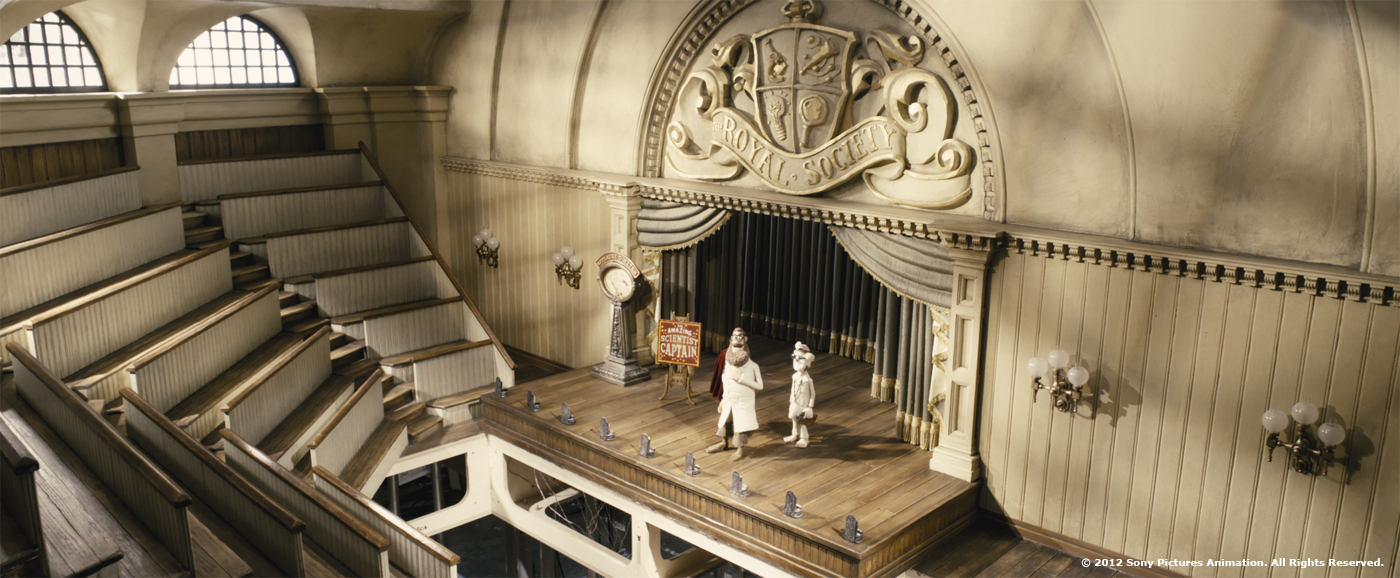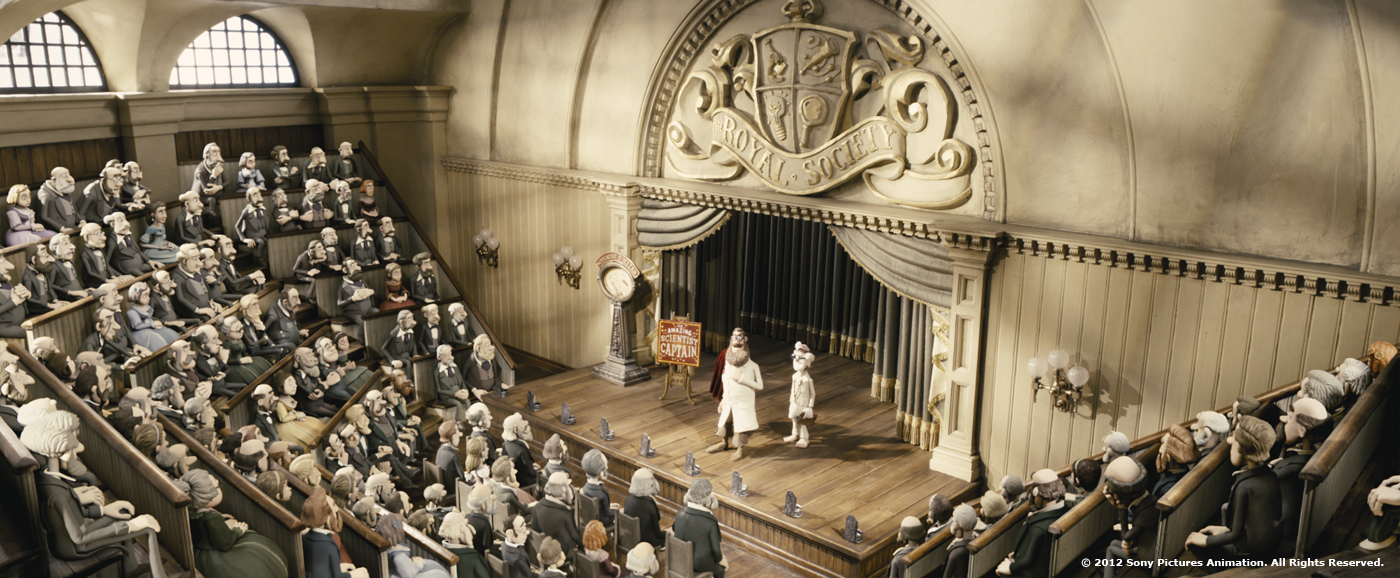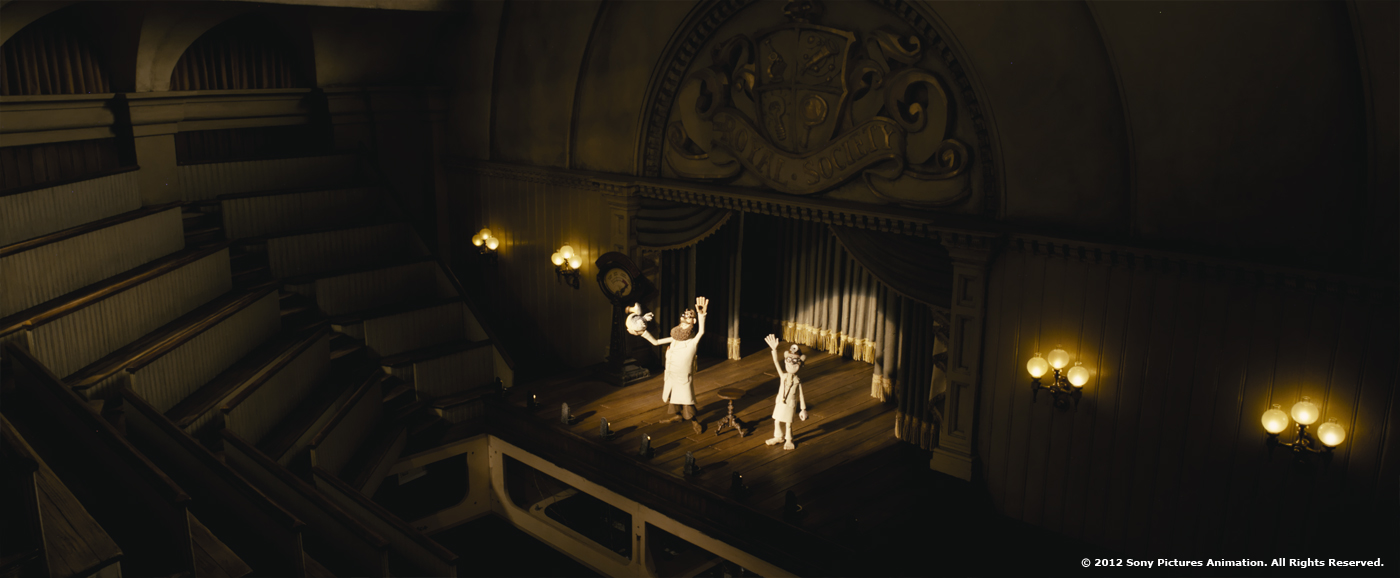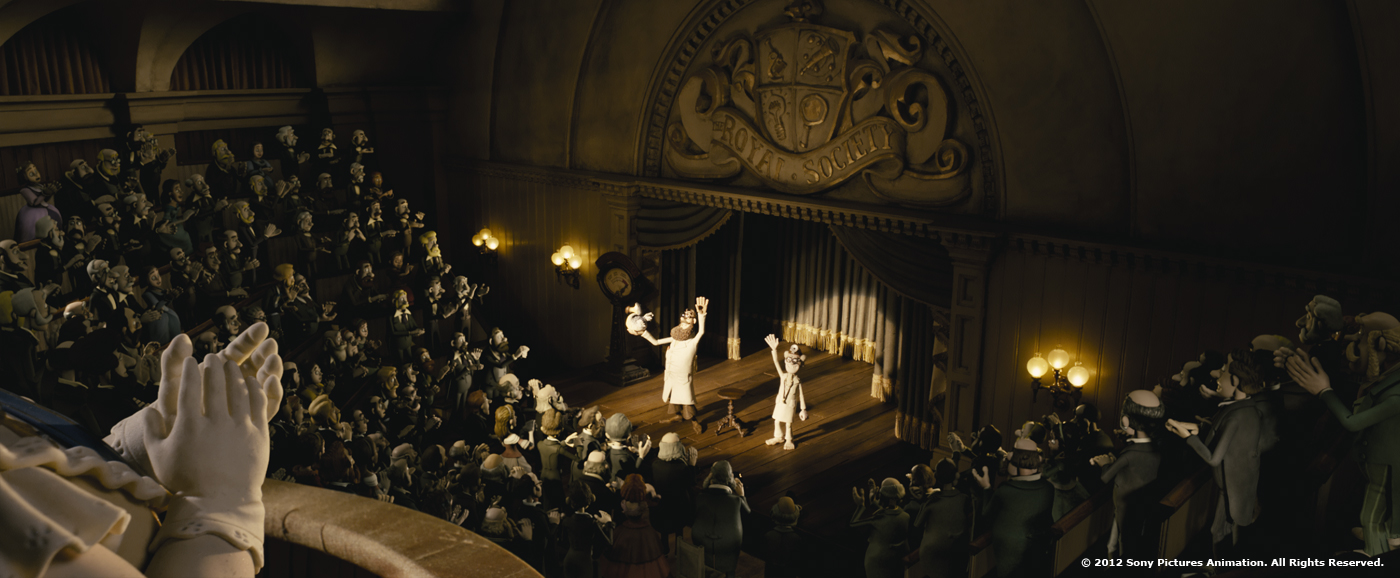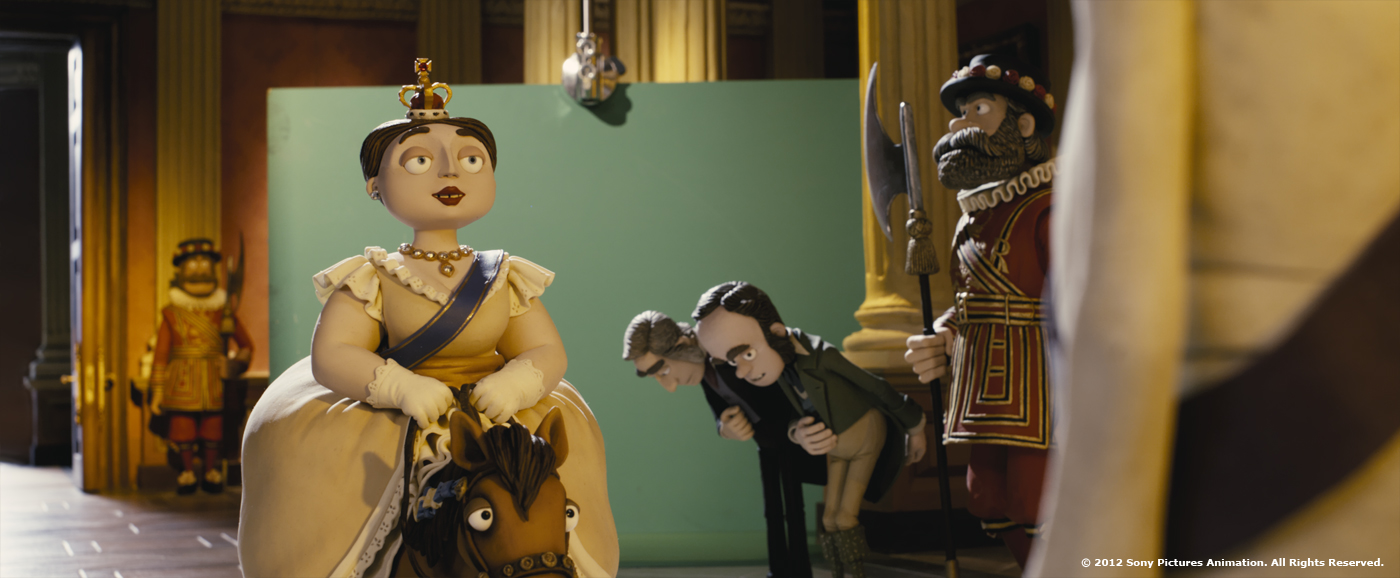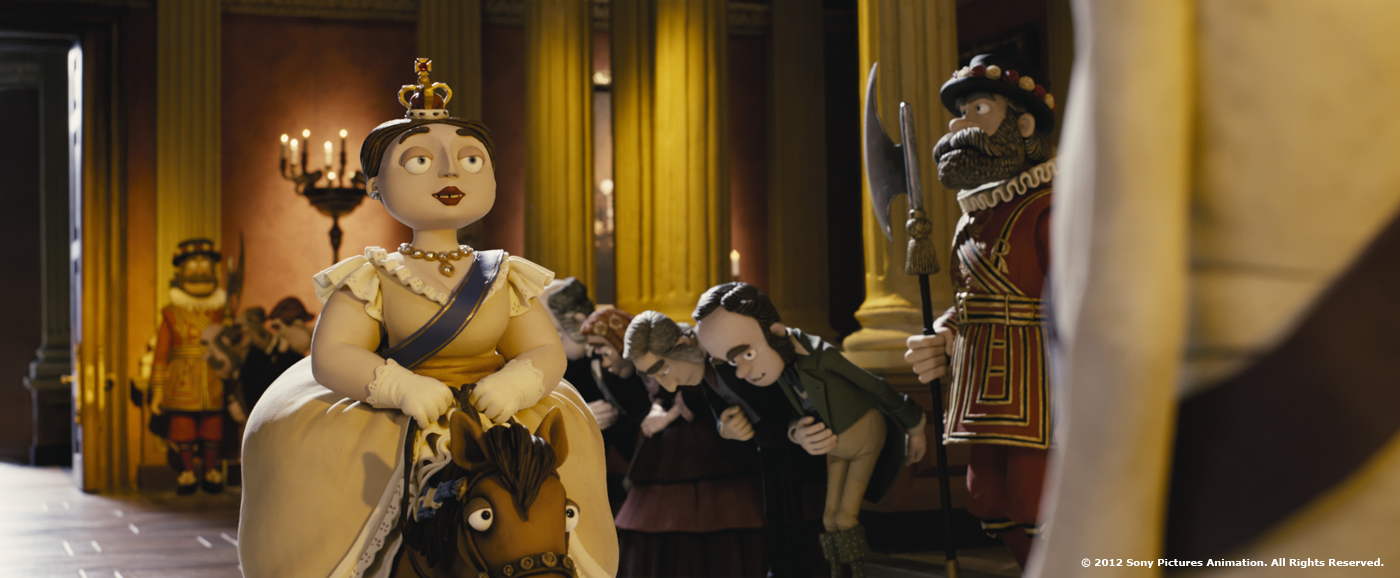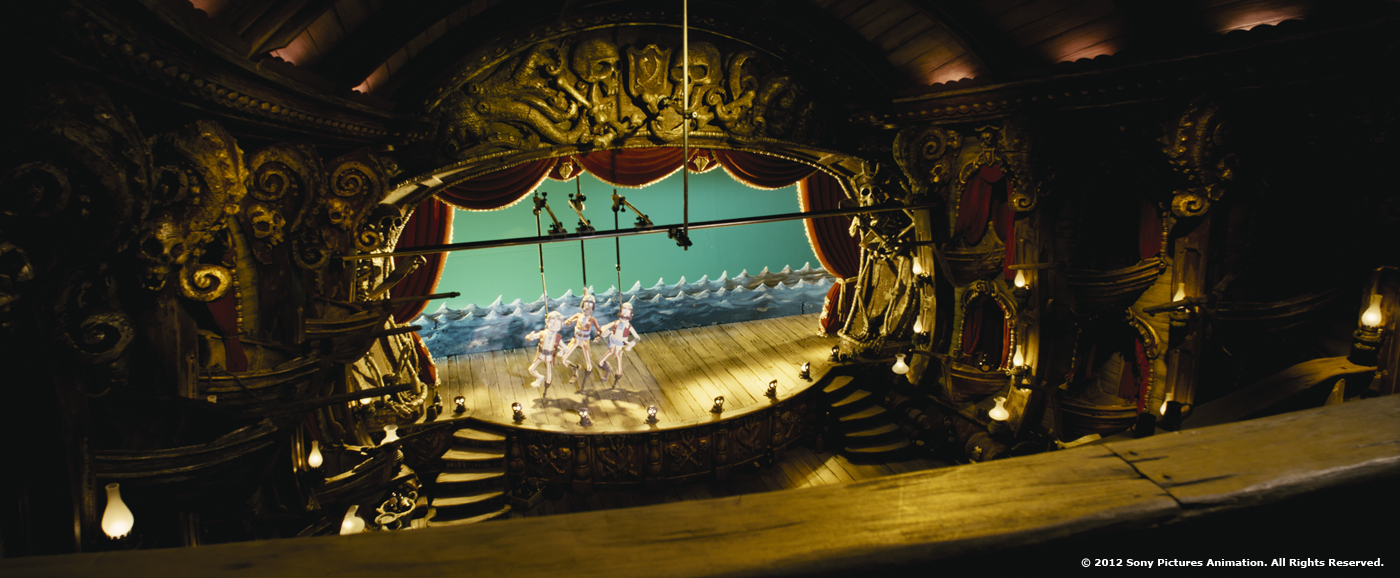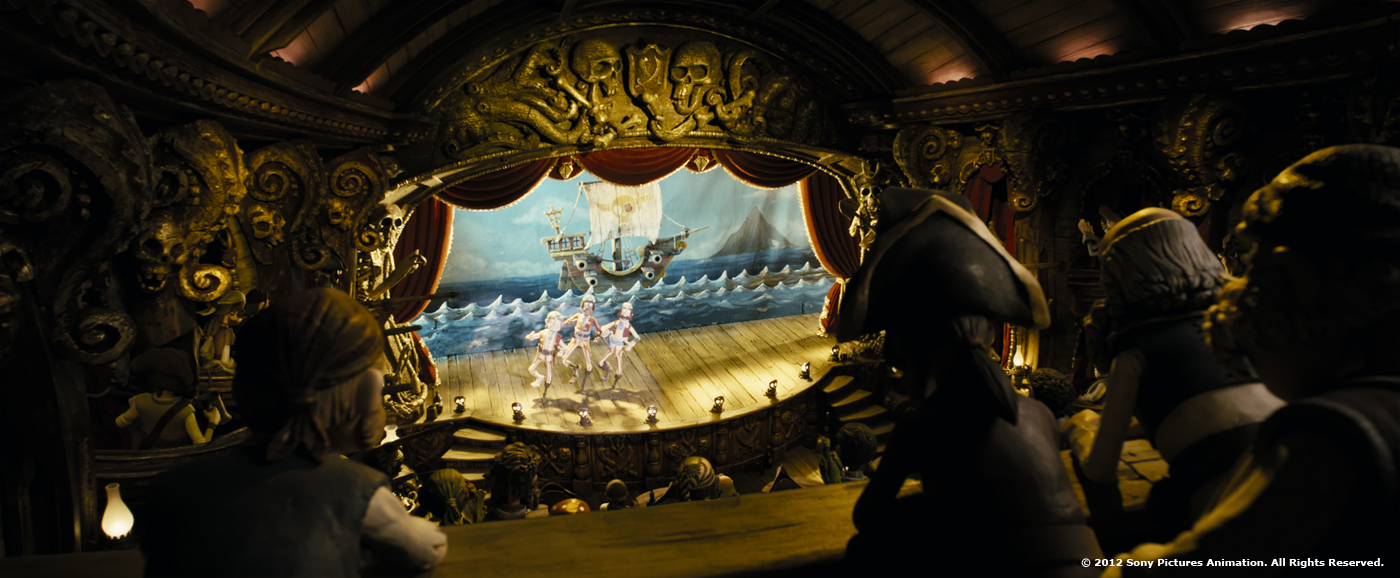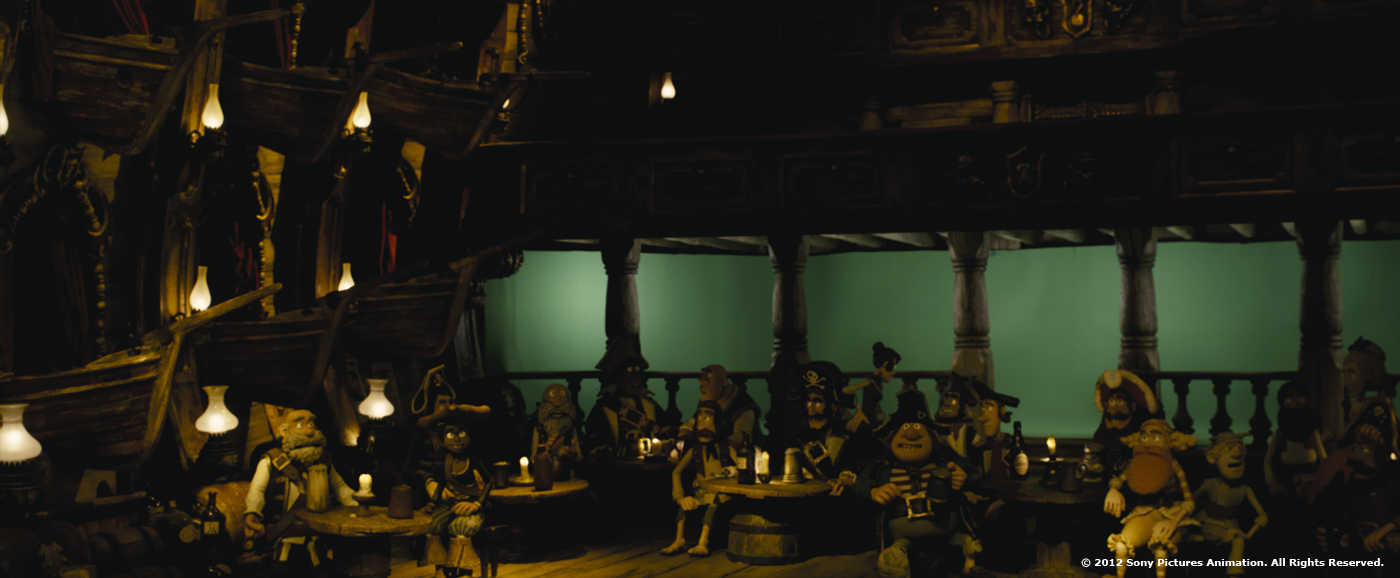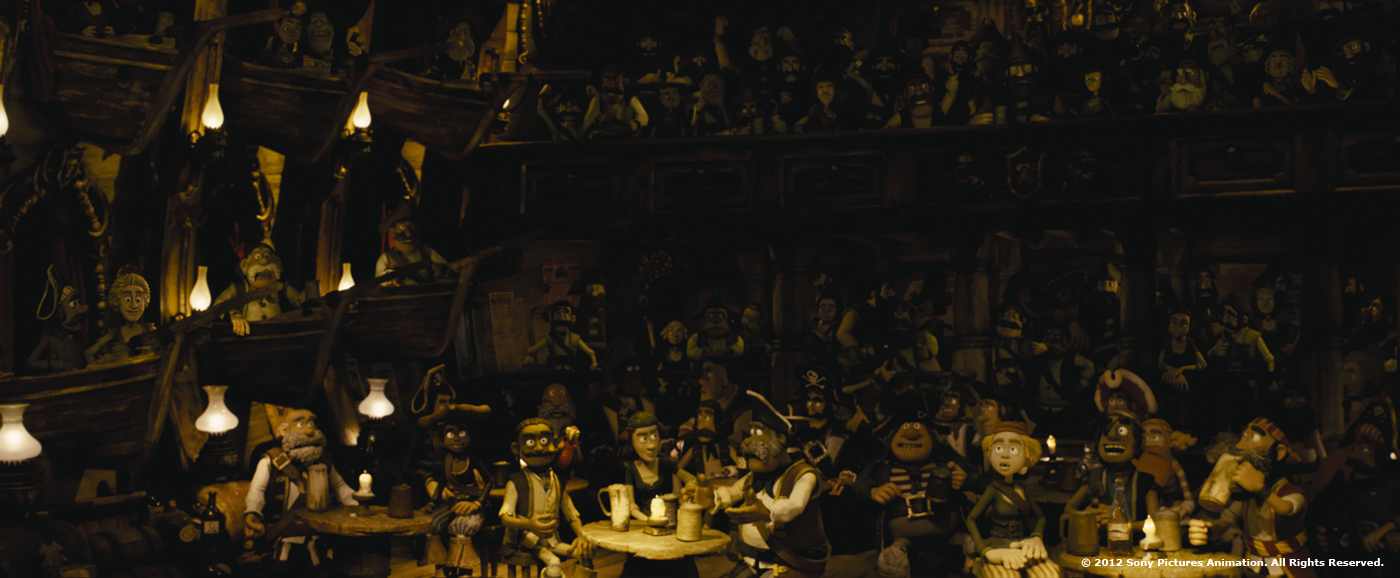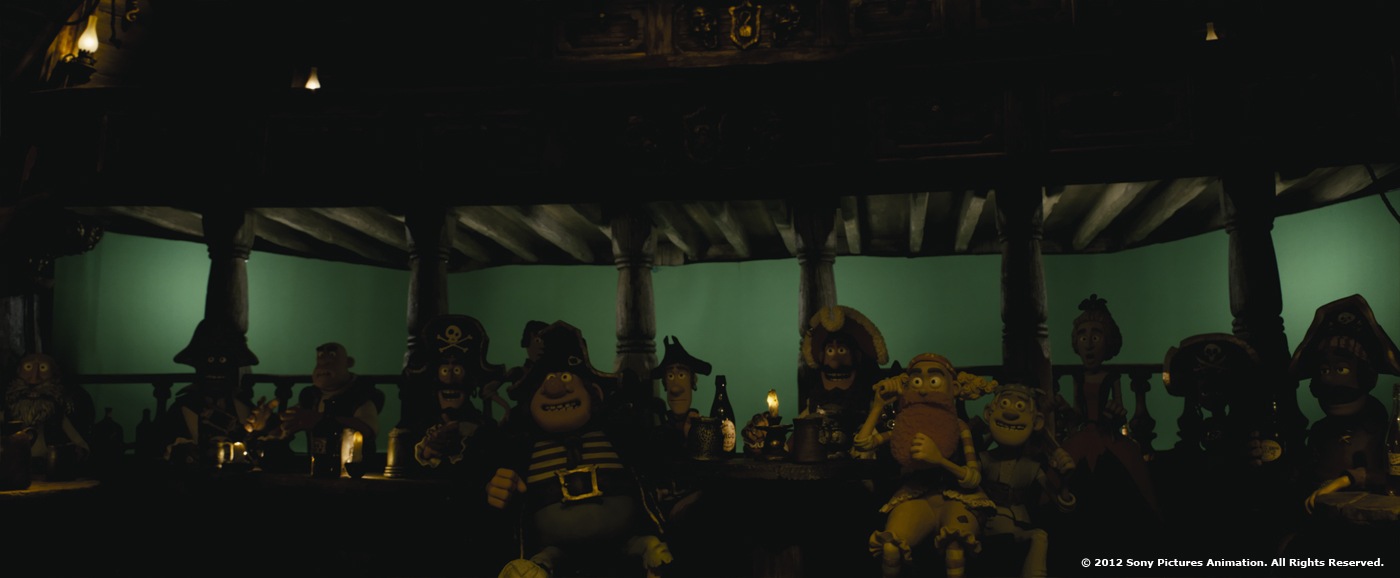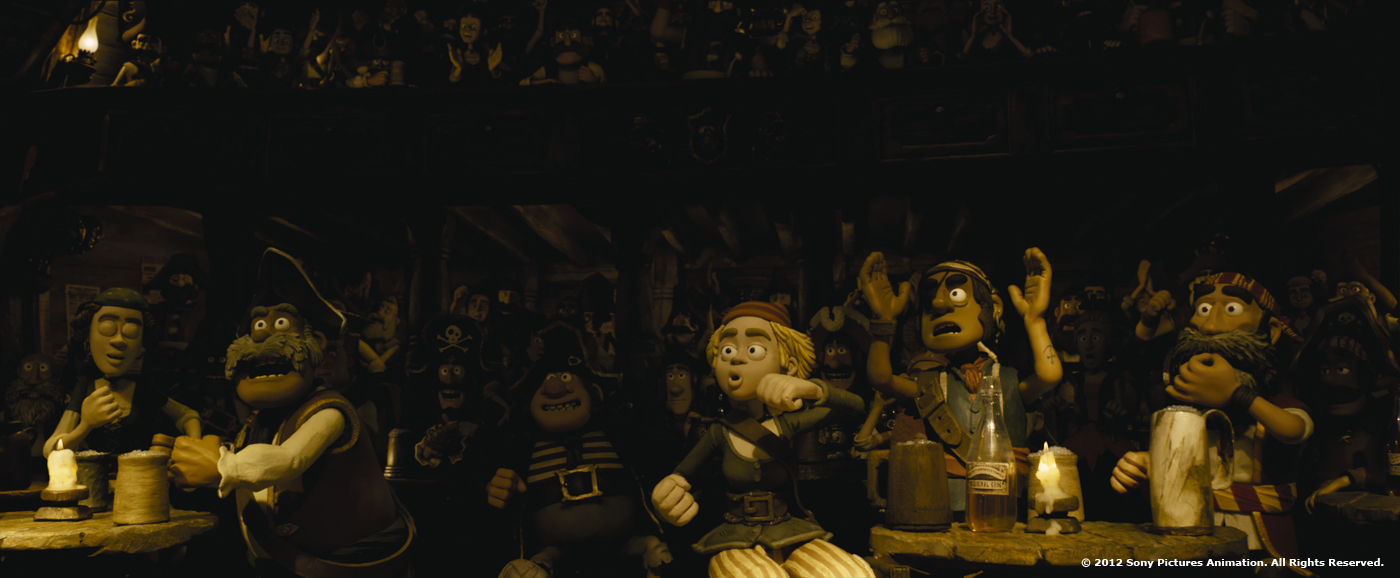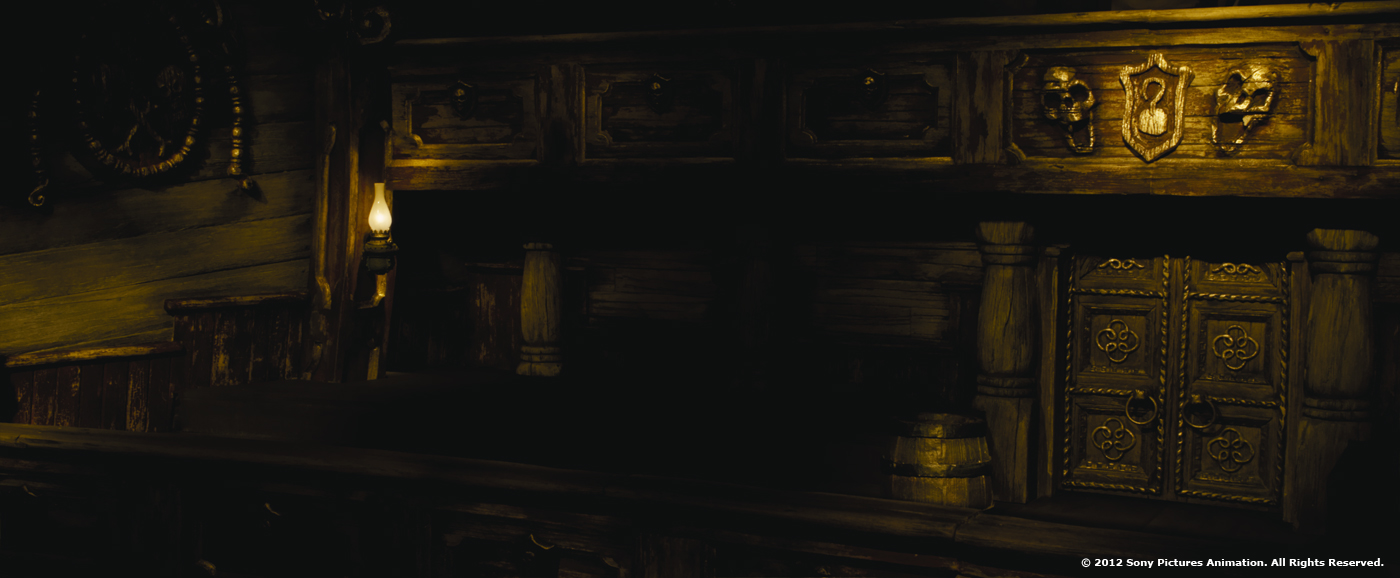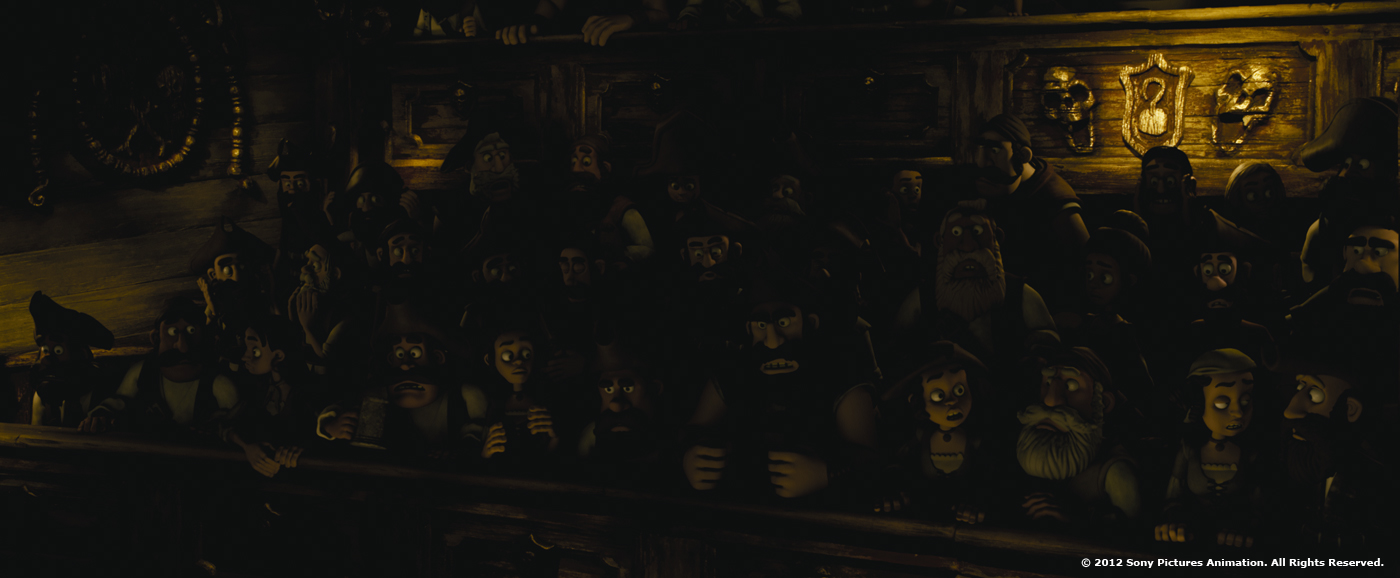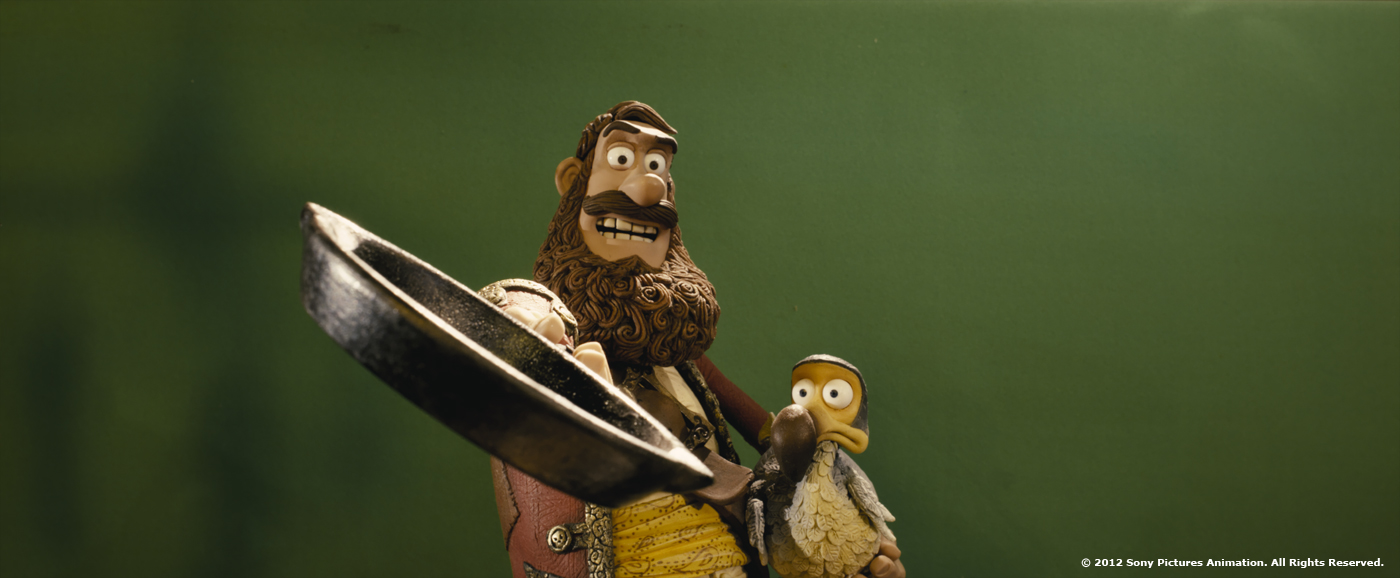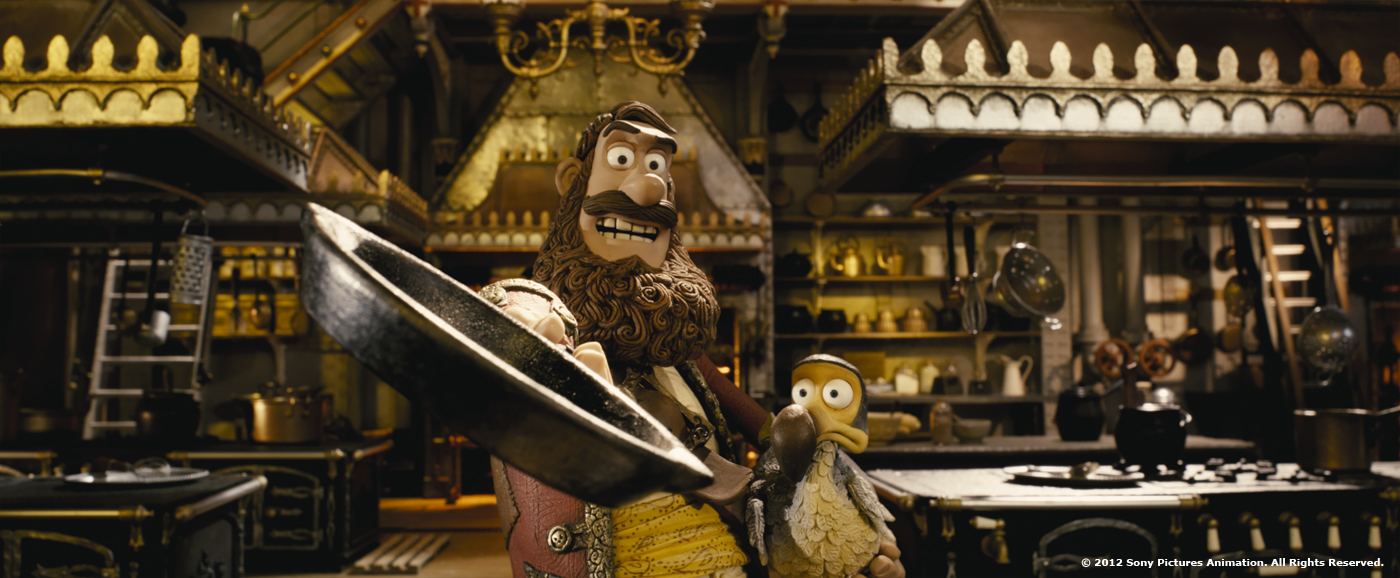After explaining his work for HARRY POTTER AND THE DEATHLY HALLOWS: PART 2 for which he received a BAFTA Award, David Vickery is back on The Art of VFX. He talks about the participation of Double Negative on THE PIRATES! BAND OF MISFITS.
How did Double Negative got involved on this project?
Ben Lock originally approached us from Aardman and we jumped at the chance to work on the project. Everyone felt that the crew would very much like the idea of working on something that their children would enjoy!
What have you done on this movie?
Double Negative‘s work on the show ranged from compositing multiple GS layers, rendering CG hero characters and crowds, sky replacements, complex wire and rig removals, and painting out the cut lines on characters faces.
How did you split the work between Dneg London and Singapore?
The majority of the visual effects work was carried out by our Singapore office with Jody Johnson remote VFX supervising from London. However, we did a lot of the initial look development and pipeline set-up in London to make it easier for Jody to sign off on.
How did you organize the work feedback and reviews between those two place so far away?
Jody worked very closely with Aardman VFX supervisor Andrew Morley and would then relay briefs to Oli Atherton (our 2D supervisor in Singapore), via Polycom video conferences. It was really important to us that Aardman considered the Singapore crew to be part of Double Negative as a whole and not a separate facility on the other side of the world. Singapore lead 3D artists Cori Chan, Sonny Sy and Leah Low would take charge of hero sequences and give progress reports to London during daily Cinesync sessions. It all worked very smoothly, even the time difference worked to our advantage. When we got in first thing in the morning it would be midday in Singapore and their crew would be ready with loads of questions. The London team would pick up the baton and be working well after our Singapore crew had gone home for the night. Producer Clare Tinsley could schedule London to fix problems for Singapore whilst they were fast asleep and be ready for them when they returned to work the next day!
Can you tell us more about your work methodology for the cleanup and rig removal?
Aardman developed a new technique to create the facial expressions for their characters on PIRATES. They constructed their puppets as usual, with heads made from hand moulded plasticine. The lower sections of the head, including the mouth and all the required mouth poses were created with a series of interchangeable 3D printed parts. This approach not only sped up the animation turnover but also allowed the characters more diverse range of facial expressions than if the whole head had been plasticine. Rather than try to blend the join between the two head pieces before shooting, the removal of the seams (or ‘cut lines’ as we called them) was left to post production meaning that every shot in the movie required visual effects. Dneg’s first task for any shot was to remove these cut lines.
Did you create procedural tools for the cleanup or everything was done by hand?
Our 2D supervisor, Ian Simpson, wrote a Nuke tool that would sample pixels from either side of a cut line on a frame by frame basis and then use an average colour to patch over it. Artists could define the area that Nuke tool sampled from with roto shapes, giving them a precise control over the end result. Some characters also had joins where the head attached to the neck. Aardman were always very careful to disguise cut lines and joins behind beards, glasses, and clothing wherever possible but it was still rare to find a character that didn’t have some join or seam that we hadn’t come across before. It’s very rare in production to find a completely automated or procedural solution to a problem. The organic nature of Aardman’s stop motion animation and the sheer variety or rigs they used constantly provided us with new clean-up challenges. These had to be done by hand.
Can you tell us more about how you creates the audiences for sequences such as The Pirate of the Year Award and the Scientist Convention?
The Pirate of the year awards and the Scientists convention are great examples of our CG character work in PIRATES. Some of the shots feature hundreds of characters yet only one or two of them are practical puppets. To maintain consistency of style across the production all character animation was executed by Aardman, who would then export animated geometry caches and send them to Double Negative where we could rebuild their scenes using the assets we had prepared.
How did you get the informations from Aardman for those sequences?
Jody, Pete Jopling (2d supervisor) and myself would have regular meetings with Aardmans VFX supervisor Andrew Morley. He was incredibly helpful and was able to brief us very clearly on all the requirements of our sequences. We had a lot of creative freedom and were encouraged to develop a strong look for each sequence before presenting it to Aardman for feedback. If we ever had any questions we would just pick up the phone – Aardman were always available.
What kind of elements did you received from Aardman?
For each shot we would receive an hero animation plate containing the practical character animation. Aardman shot using DSLR’s mounted on miniature motion control rigs, so for clean up, rig removal, and set shifts we would get clean plates that would be a perfect repeat of each shot’s camera move. These were really helpful. If a shot required CG character work, Aardman could position the practical counterpart of the CG puppet in the set, under camera ready lighting and shoot a reference plate for our 3D artists to match to.
How did you manage the lighting challenge?
Aardman provided us with HDRI environments for each new sequence or set piece. Dneg London set up lighting rigs using a combination of the supplied HDRI maps placing additional area lights to simulate the diffusers and bounce cards used on set. Small point lights were added to replicate lamp or candle positions in the original plates. We had to work hard to match the qualities of light and shadow in the scans. Wherever CG characters needed to connect and interact we had to rebuild the practical sets in 3D to cast shadows and bounce light correctly onto our characters and help integrate them into the plates. The Pirate of the Year sequence provided a particular challenge in trying to create the feel of a large crowd in very dark lighting conditions. Oli Atherton’s team did a fantastic job at the compositing stage to craft the final look of these shots. It was great to see such a strong look created, picking out details and movement in the shadows with rim lights, letting the rest fall into the shadows to subtly establish each CG characters presence in the back corner of the tavern. The lighting ended up being as much of a 2D job as it was 3D.
Can you tell us more about the pipeline between Aardman and Dneg?
From a 3D perspective the largest pipeline challenge was the initial look development of the CG characters. Aardman provided us with their models and textures along with photographic turntables of the actual puppets against a neutral grey environment. Our CG characters needed to be carefully lookdev’d to match their practical puppets. The show provided a perfect scenario to production test Double Negative’s new ‘V4’ Renderman pipeline; a physically plausible shading system that relies almost entirely on ray-tracing. Initial render times were a little longer than we were used to but the results were fantastic. Small subtlety’s in the way the light flooded and bounced around the models provided a near perfect match to Aardmans practical puppets and we were even able to introduce tiny amounts of subsurface scattering into the plasticine to further perfect the look. We were so confident of the new shading system that we didn’t once need to refer to Aardmans own CG turntable renders.
How did you manage the stereo aspect of the show?
All of the work had to be completed in stereo, which meant that clean-up often had to be done twice – once for each eye. The stop motion really worked in our favour here though as all our clean passes were a perfect match for the hero plates which took some of the difficulty out of the work.
What was the biggest challenge on this project and how did you achieve it?
Details like the animators thumb prints on characters, quirky set shifts or random glue spots contaminated every shot. In order to retain the hand crafted soul of the work; Jody Johnson (Dneg’s vfx supervisor) would study each frame and decide which of these errors to selectively leave and which to remove. It was important to Aardman that the work was finished to an incredibly high standard but still retained the Aardman look and this was an incredibly simple yet time consuming part of the work.
Was there a shot or a sequence that prevented you from sleep?
No! Our Singapore team had everything under control. They did a great job.
What do you keep from this experience?
It was a pleasure to work on a film that obviously had so much soul and love poured into it. The beautifully hand crafted sets and characters in the PIRATES served as a constant reminder of how much work goes on before we even see anything! Its not always about visual effects!
How long have you worked on this film?
9 months.
How many shots have you done?
The final count was 393.
What was the size of your team?
25 artists in London and 57 in Singapore.
What is your next project?
I’m currently in pre-production on FAST AND THE FURIOUS 6 as the show’s Visual Effects Supervisor.
A big thanks for your time.
// WANT TO KNOW MORE?
– Double Negative: Dedicated page about THE PIRATES! BAND OF MISFITS on Double Negative website.
© Vincent Frei – The Art of VFX – 2012


